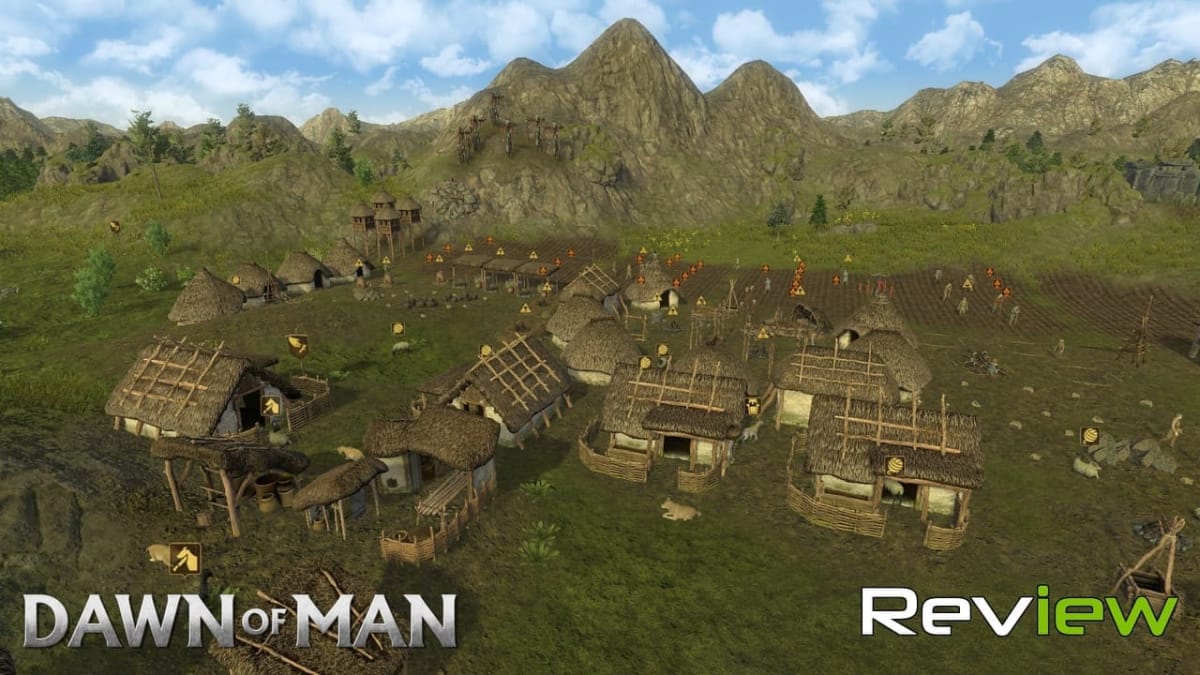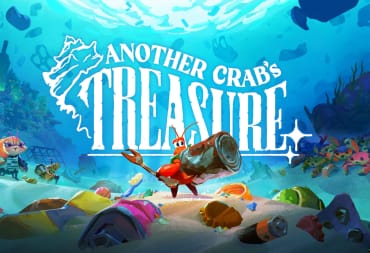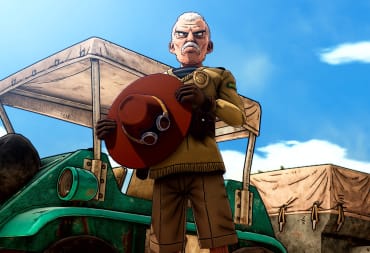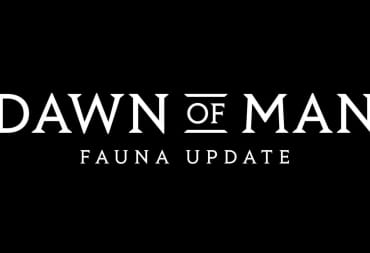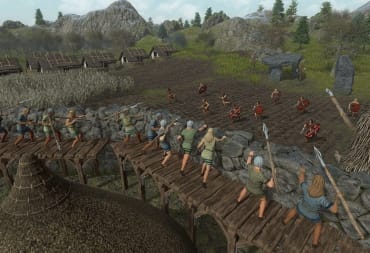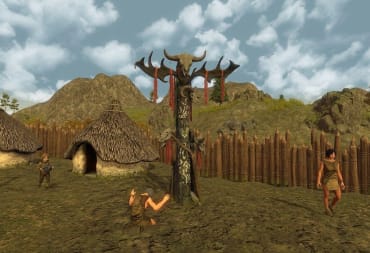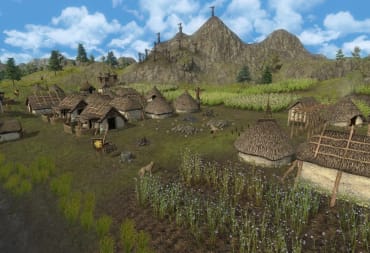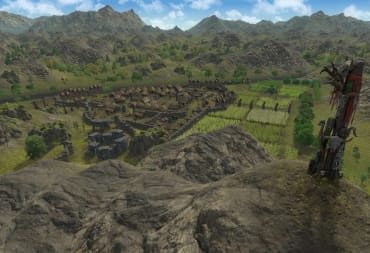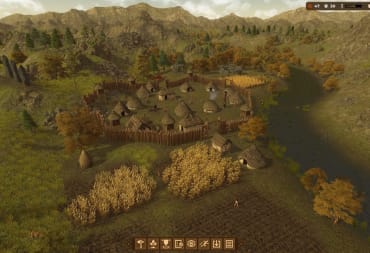As an avid fan of Madruga Works' Planetbase, the final release of Dawn of Man came after much anticipation. I first previewed the developer's next game in late January and generally liked what I saw. Now that the dawn has arrived, I've spent a little more time in the world of man's early history. I put 16 hours into Dawn of Man, on top of the 32 hours I played for my preview. I enjoyed the time I spent, although a few tiny problems put a damper on the fun.
Dawn of Man is exactly what it says on the tin: it's all about mankind's earliest days. You'll control what amounts to a small hunting camp and gradually grow it into a populous village. Players contend with deadly wild animals, vicious raiders, and the challenges of surviving the elements. The greatest challenge of all, however, is simply meeting the basic needs of your people.
There are three different scenarios that players can choose from. You must earn "Milestones" by completing certain objectives to unlock successive scenarios. The first two start off as bog-standard games at the very beginning of the tech tree, but the third and final scenario advances players up to the Neolithic Era.
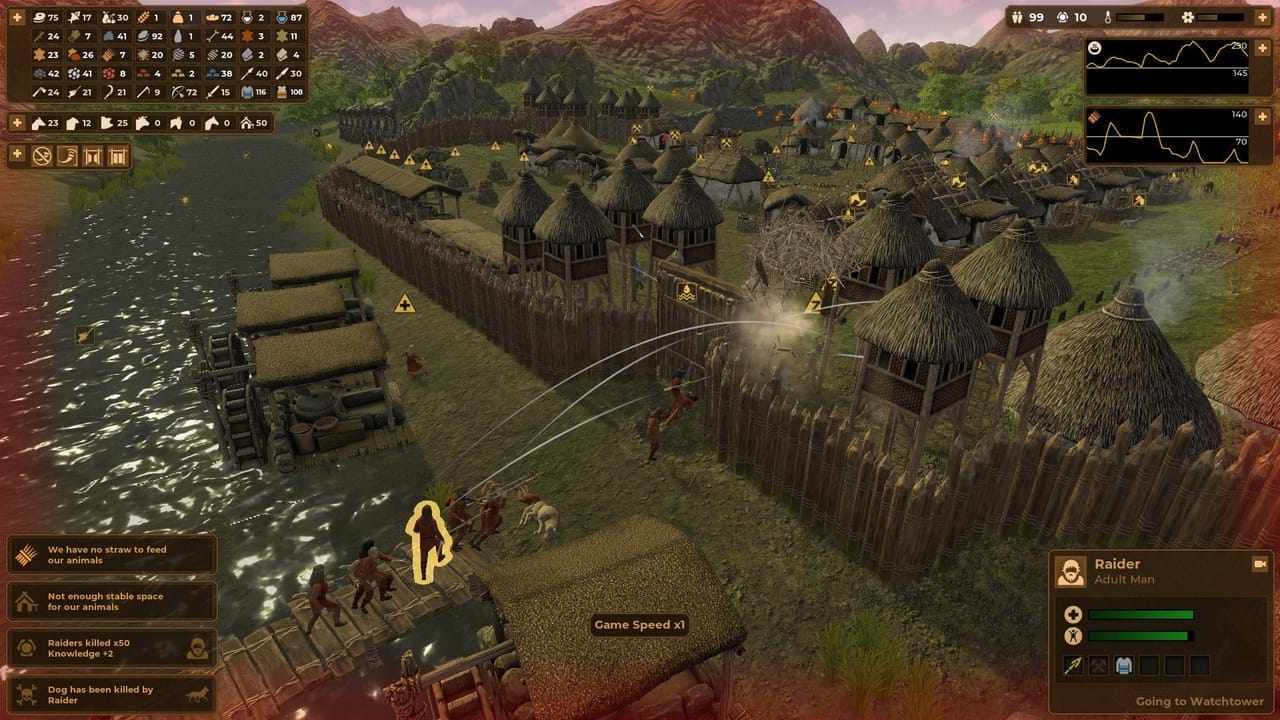
Typically, a level starts you off with a few people, a couple of tents, and a campfire. Your villagers have some very basic tools to get started. Other than that, you're on your own to build and shape your little pocket of civilization as you please. Typically, one starts by designating work areas for flint, sticks, fishing, hunting, and gathering wild plants. Areas automatically assign villagers to collect these items until you hit the limit that you set. The items pile up, and villagers can use them to craft more complex tools, materials, and foodstuffs. A practiced player can turn their village into a well-oiled machine where absolutely everything is automated and direct player intervention is minimal.
When you do feel the need to intervene, the villagers are controllable with standard real-time strategy controls. This doesn't always work out well—I've found villagers turning around halfway to where I've ordered them to go at times. There's enough control that you can nudge them in the right direction, but the capability for finer manipulation of your villager's tasks is somewhat lacking. As an example, you can't really queue up multiple actions with the Shift key like you can in some RTS games.
Your village will be relatively small in the Paleolithic and Mesolithic eras. Largely, the gameplay focuses on day-to-day survival through foraging and hunting. Everything changes in the Neolithic Era, as you can finally plant crops and domesticate animals. The amount of food production at this point spikes considerably and makes it easier to support larger populations.
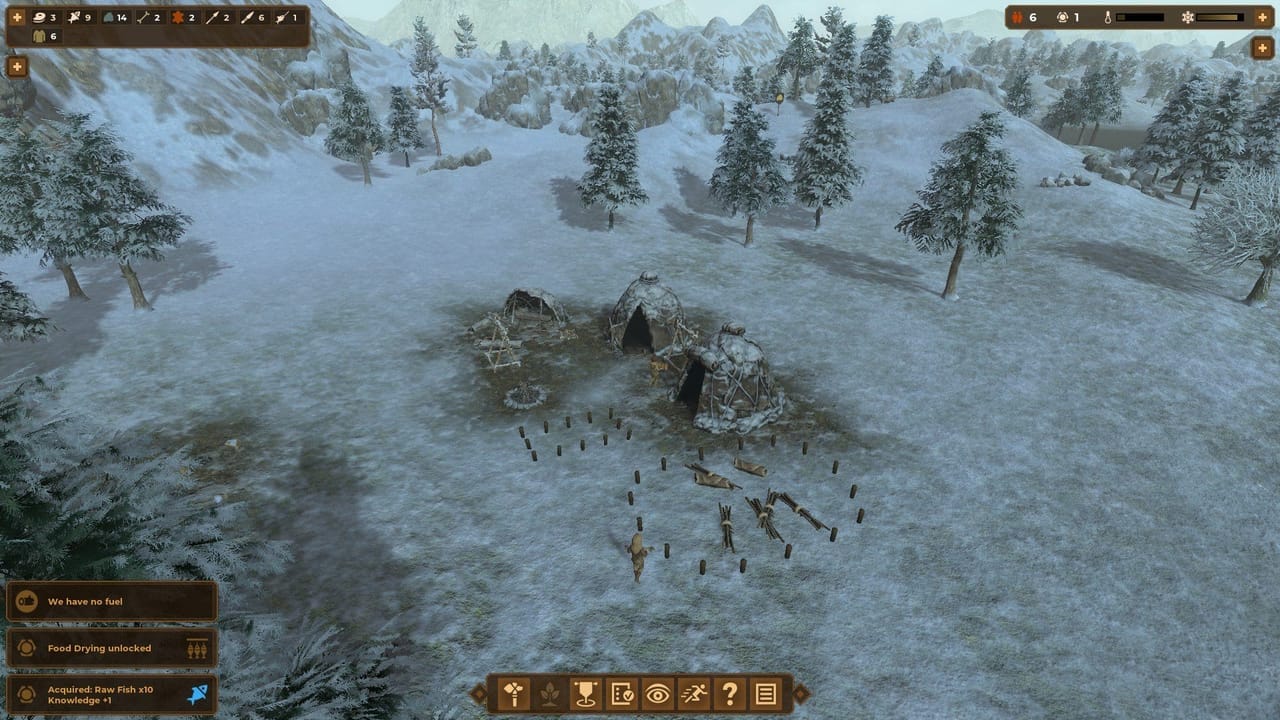
As Dawn of Man goes on, you'll begin to hit certain gameplay milestones that grant Knowledge Points. Earning enough points is your ticket forward in time into the next era. Build your first Storage Tent? There's a point. Build five Storage Tents? There's another. Most of your points will be earned by producing goods and erecting buildings. You'll also get periodic rewards for hitting certain population numbers, hunting animals, and killing raiders.
There are also pockets of combat here and there. Mainly, players need to deal with hostile wild animals, hunt large game, and fight raiders. Hostile wild animals like wolves and bears randomly attack but they're otherwise a minor threat. Any group of three villagers should be able to win the day with no casualties. The larger group battles require a degree of coordination. Hunting a wooly mammoth or rhinoceros necessitates moving a hunting party into range manually and bringing the creature down. It's risky, but it gives you a great deal of meat, skins, and bones to sustain your people.
As for the raiders, you're not restricted to just handheld weapons. Later eras allow players to build walls and guard towers to help defend their village. Unfortunately, I've found these comically weak—a problem that persists from the time I did my preview. Putting eight towers on a gate barely fends off a mid-game raiding party and you'll still lose 2-4 towers. As I played more, I eschewed using towers and walls at certain points and found that to be just as good of a defensive option. (To paraphrase the Spartans, sometimes it's better to have a wall of men than a wall of bricks.)
Another issue I had revolves around straw. This resource is a byproduct of producing any crops in the grains family. Straw is mainly used to feed animals in the winter and as a component for building and maintaining buildings. Animals can eat grain instead of straw, but only straw can be used to build buildings and maintain them. This is all done automatically (as are most things in the game), so it's impossible to manually feed them grain instead of straw; you have to simply wait until all of your straw has run out before they'll even use grain. I wish there were an option to simply feed animals grain and preserve my straw for my buildings, but no such option exists. Straw is so important that you can set up a tracking chart for it! The inability to work around this issue is, in my eyes, a terrible oversight.
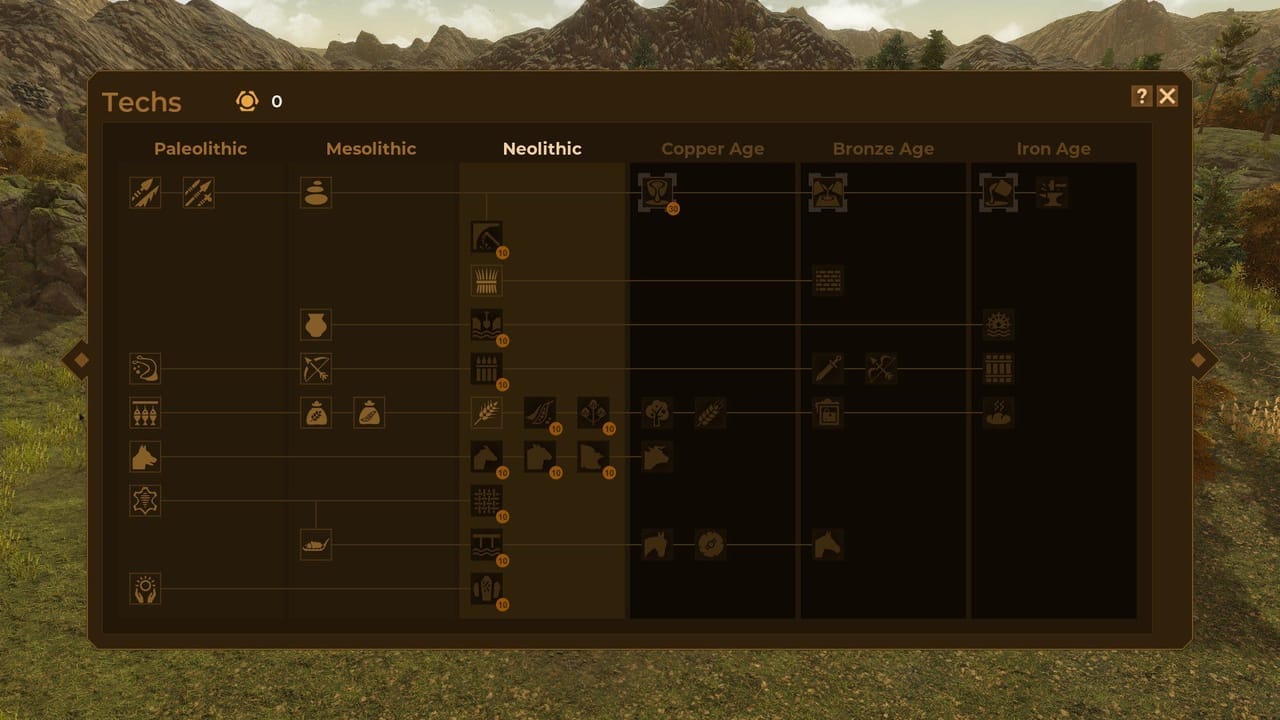
Aside from the core campaign in Dawn of Man, there are also challenges and a Creative Mode. The challenges will occasionally take you outside of normal gameplay. For example, one of these scenarios has players walking a herd of wooly mammoths across an entire map. The Creative Mode is intriguing, but it doesn't allow players to select their map. That's a bit of a downer overall as it really hampers your ability to pick the perfect location for your needs.
On the plus side, dedicated gamers can simply make their own scenarios. Madruga Works makes use of an XML text system to create the maps and plot out objectives, so it certainly isn't for the faint of heart. It is possible to figure things out, though—a number of scenarios from beta players are already available on the Steam Workshop. It would have been nice to do all of this through a GUI, but alas. Nonetheless, modding means more content for players to enjoy and it's a definite plus for Dawn of Man.
Graphically, Dawn of Man does a pretty decent job. I did notice the occasional hiccups like a tree not disappearing, but a restart corrected this problem and any other such issues were exceedingly rare. As for the music, it perfectly evokes the theme of man's early days. The music is a credit to the game and really gets you into the whole experience.
Dawn of Man does have its issues. Static defenses are weak and the AI is occasionally a little stupid. Madruga Works' Planetbase was similarly rough in the beginning and became a much smoother game over time. I believe that a similar process will take place here in the coming weeks and months after launch. These minor problems aside, it's still a fine game that's well worth playing for any city builder or real-time strategy fan.
TechRaptor covered Dawn of Man on PC via Steam with a code provided by the developer.
Review Summary
<em>Dawn of Man</em> has a couple of small issues, but it's otherwise a solid game that's sure to be enjoyed by fans of city builders and real-time strategy alike.
(Review Policy)Pros
- Solid Gameplay Loop
- Players Can Micro (But Don't Have To)
- A Setting Often Unexplored
- Excellent Music
Cons
- Defenses Feel Weak
- Difficult To Manage Straw Supply
- Occasionally Stupid AI
Have a tip, or want to point out something we missed? Leave a Comment or e-mail us at tips@techraptor.net
